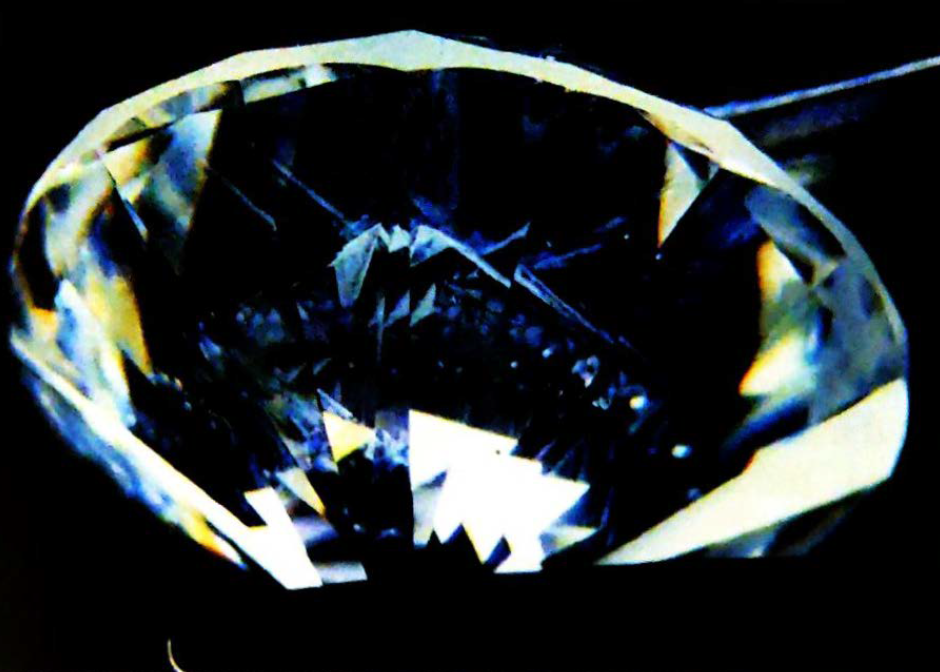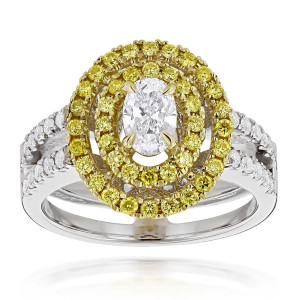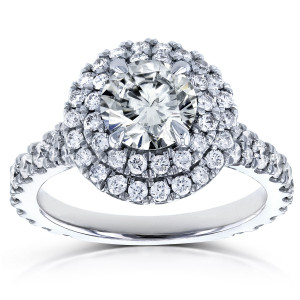If you were to ask ten jewelers this question, you'd probably get ten different answers. As in any other profession, there's disagreement as to what's best for consumers. This article gives my opinions and recommendations. There are other qualified people in the trade that may disagree with some of them.
You should base your choice of diamonds on the purpose for which it will be used. If you are buying a diamond for a wedding or engagement ring, it must be able to withstand a lifetime of daily wear and it should be worthy of being a symbol of eternal love. If you're buying diamonds for other jewellery such as stud earrings, durability an quality will be less important. If you're buying diamonds for resale or investment, the desires of potential buyers should influence your choices.
In this article I will elaborate What kind of diamonds you yould buy for wedding and engagement rings. My next article here will be focusing on diamonds for resale or investment purposes.
Cut quality: A well-cut diamond should be a priority if you want your diamond to have good brilliance and sparkle. I will help you select a diamond that's well cut in following articles later.
Colour: It doesn't matter what color the diamond is as long as the person wearing it likes it. If you're looking for a traditional type of diamond without noticeable tints of yellow, buy one with a grade higher than L colour.
If you like warmer colors, consider buymg color grades below K color. You'll be able to get a bigger and better diamond for the same amount of money as a colorless or near colorless diamond. Because of their lower price, G and H colors are popular alternatives to D-F grades. Even people in the trade may have a hard time telling the difference between say an E- or G-color diamond when they're mounted in a ring.
If you have an ample budget and you'd like a distinctive diamond, consider getting one that's fancy color.
Carat weight: Any size is acceptable. Buy what you can afford.
Clarity: Avoid 12 and 13 clarity diamonds. They have inclusions that affect the beauty and/or threaten the durability of the stone. Consequently they're not as resistant to knocks as diamonds of higher clarity, nor are they as attractive. Some I 1 diamonds are acceptable for everyday wear, but generally your safest bet is to buy diamonds with a clarity of SI 2 or higher. A diamond doesn't need to be internally flawless or have a VVS grade to be beautiful. In fact as diamond treatments and synthetic diamonds become more prevalent, minor inclusions may become desirable features in diamonds because they can help prove that a stone is natural and untreated.
Cutting style & stone shape: Buy whatever you like best.
Transparency: Buy a transparent diamond(s). If a diamond is cloudy, it won't display adequate brilliance and sparkle no matter how well cut it is.
Treatment status: Buy untreated diamonds for reasons of durability and desirability. One of the advantages of buying diamonds bridal rings, instead of other gems is that natural diamonds are more resistant to abrasions and damage. They have withstood the test of time.
High temperature heat treatment has made some colored gemstones more brittle and susceptible to chipping and abrasions. We don't know yet what effect it has on the durability of diamonds. Likewise, you can't be certain if fracture-filled diamonds are resistant to mocks, anormal occurrence when they're mounted in everyday rings. Diamonds with large fractures, be they filled or unfilled, arc not as durable as diamonds of good clarity.
 |
| The distinctive inclusion within this diamond gives it an imperfect clarity grade because it's so large and centrally located. However, since the inclusion is relatively clear, this 5-carat diamond looks better than some S12 stones when viewed face-up. It would make an attractive pendant, but it may not be the best choice for an everyday ring. Large inclusions can sometimes create strain, making a diamond more susceptible to damage from knocks against objects. Evaluate diamonds both with your eye and with a ten-power magnifier instead of relying solely on grades. |
Untreated diamonds are more prized and much easier to sell than treated diamonds. They'll become more rare as diamond treatments increase. Why buy an enhanced diamond for something so special as a bridal ring when attractive, untreated diamonds are still readily available?
Since treated diamonds are harder to sell, they're disguised with euphemisms such as "clarity enhanced" and "processed," or else they're given an expensive sounding brand name. That's why it's important to ask if diamonds are treated or not. In addition, deal with sellers that will discuss and disclose treatments to you in clear language.

















































